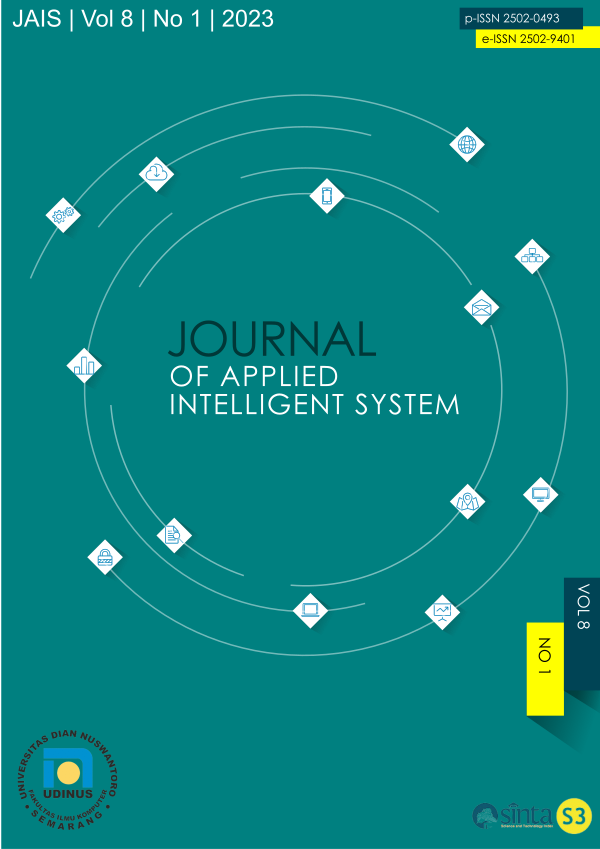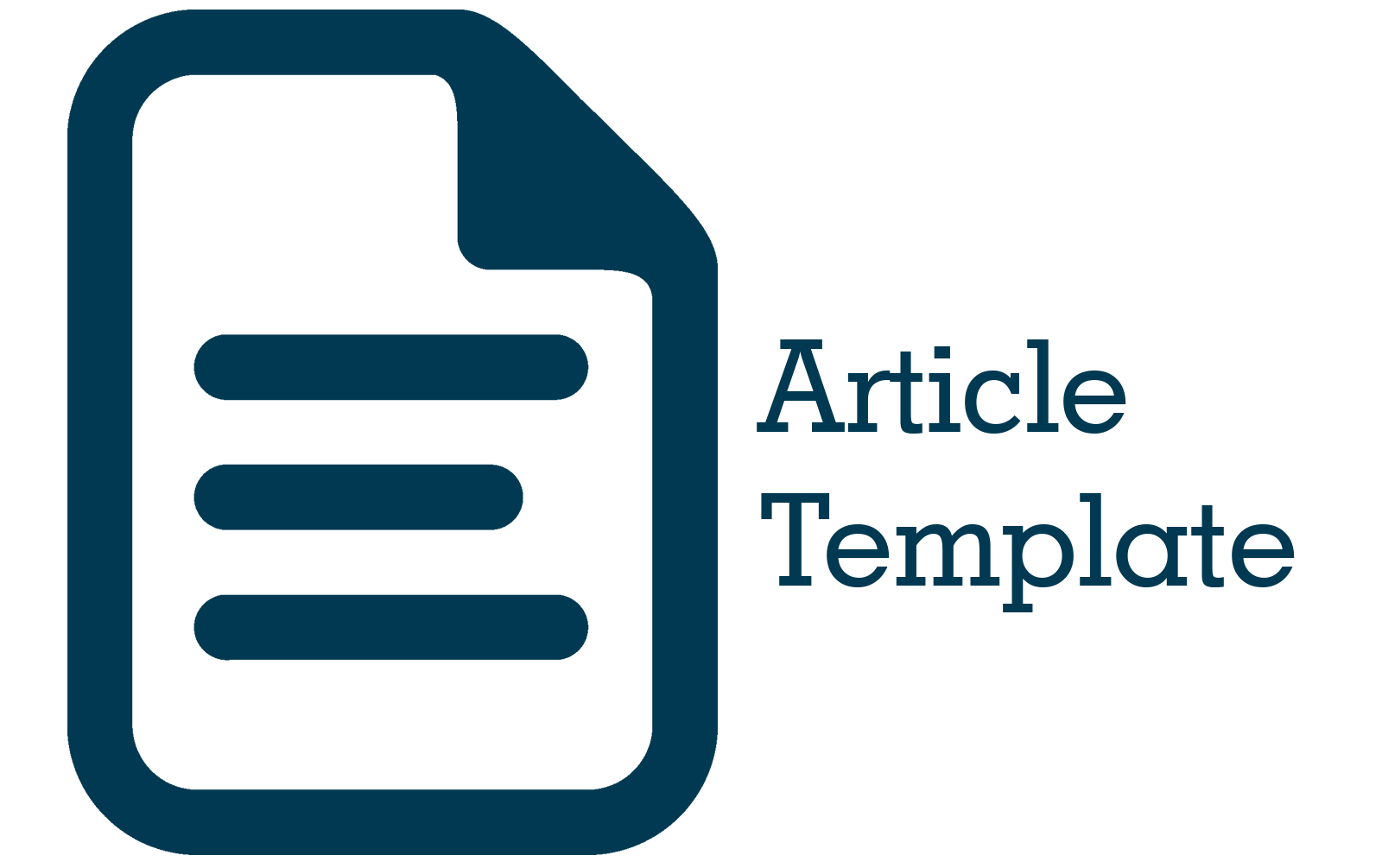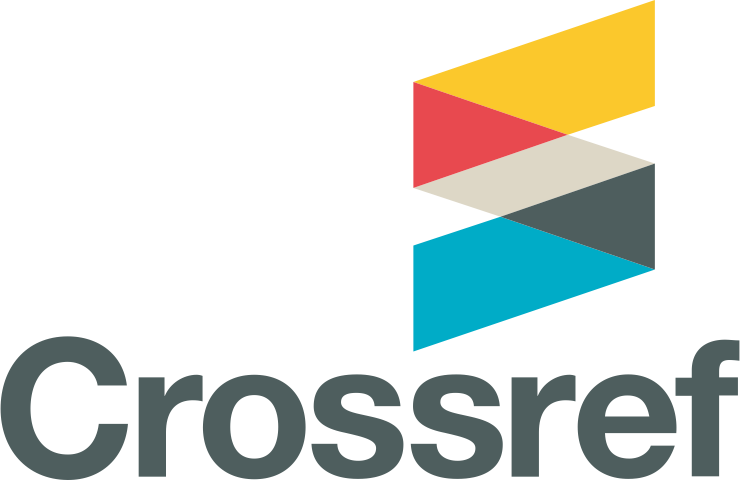Classification of Naive Bayes Algorithm on Dengue Hemorrhagic Fever and Typhoid Fever Based on Hematology Results
DOI:
https://doi.org/10.33633/jais.v8i1.7547Abstract
The application of increasing technology developed explicitly in the health field would significantly have an urgent role in guaranteeing quality service. Application deep data mining techniques classifier method, one among them used for classify something possibility, for example for classification disease. Dengue Hemorrhagic Fever is a disease caused by the dengue virus biting the Aedes aegypti mosquito. Meanwhile, Typhoid Fever is a disease caused by the bacterium Salmonella typhi. The second disease could attack all types of circles, fine children or mature ones. The second disease is almost the same symptom, so a proper diagnosis is needed to differentiate it. Study this applies the Naive Bayes algorithm to classify Dengue Hemorrhagic Fever and Typhoid Fever using 250 yield data test blood routine hematology at Tugurejo Hospital. Attributes used in the study, age, type sex, temperature, leukocytes, erythrocytes, hemoglobin, hematocrit, platelets, anti-dengue IgG, anti-dengue IgM, salmonella typhi o and salmonella Typhi h. The Naïve Bayes method is one of the techniques that can be used to perform analysis in determining the diagnostic results from a number of data studied with the aim of producing optimal results. The use of the Naïve Bayes method in this application is due to the probability that the accuracy value of the Nave Bayes method is close to the accuracy value of the experts.[12] The results of testing the Naive Bayes method using a confusion matrix show Recall value is 97.62%, Precision is 93.89%, accuracy is 93.33%, and Error Rate is 6 %. It can be concluded that this method is suitable for classifying Dengue Hemorrhagic Fever and Typhoid Fever and can be applied in studying this.References
F. Tawakal and A. Azkiya, “Diagnosa Penyakit Demam Berdarah Dengue (DBD) menggunakan Metode Learning Vector Quantization (LVQ),” JISKA (Jurnal Inform. Sunan Kalijaga), vol. 4, no. 3, p. 56, 2020, doi: 10.14421/jiska.2020.43-07.
B. Andrianto, Y. K. Suprapto, I. Pratomo, and I. Irawati, “Clinical decision support system for typhoid fever disease using classification techniques,” Proc. - 2019 Int. Semin. Intell. Technol. Its Appl. ISITIA 2019, pp. 248–252, 2019, doi: 10.1109/ISITIA.2019.8937286.
I. L. T. Co, M. R. E. Estuar, K. E. Espina, R. J. E. A. Lara, and V. C. D. De Los Reyes,
“Integrating health indices towards the development of a typhoid disease model using STEM,” Proc. 2016 3rd Int. Conf. Inf. Commun. Technol. Disaster Manag. ICT-DM 2016, 2017, doi: 10.1109/ICT-DM.2016.7857211.
Shaufiah and B. Siswanto, “Association rule mining for identifying Dengue Hemorrhagic Fever (DHF) and Typhoid Fever (TF) disease with IST-EFP algorithm,” 2016 4th Int. Conf. Inf. Commun. Technol. ICoICT 2016, vol. 4, no. c, 2016, doi: 10.1109/ICoICT.2016.7571920.
U. Febriana, M. Tanzil Furqon, and B. Rahayudi, “Klasifikasi Penyakit Typhoid Fever (TF) dan Dengue Haemorhagic Fever (DHF) dengan Menerapkan Algoritma Decision Tree C4.5 (Studi Kasus : Rumah Sakit Wilujeng Kediri),” 2018. [Online]. Available: http://j- ptiik.ub.ac.id
M. A. Jabbar and S. Samreen, “Heart disease prediction system based on hidden naïve bayes classifier,” 2016 Int. Conf. Circuits, Control. Commun. Comput. I4C 2016, 2017, doi: 10.1109/CIMCA.2016.8053261.
C. Raju, E. Philipsy, S. Chacko, L. Padma Suresh, and S. Deepa Rajan, “A Survey on Predicting Heart Disease using Data Mining Techniques,” Proc. IEEE Conf. Emerg. Devices Smart Syst. ICEDSS 2018, no. March, pp. 253–255, 2018, doi: 10.1109/ICEDSS.2018.8544333.
W. B. Zulfikar, Y. A. Gerhana, and A. F. Rahmania, “An Approach to Classify Eligibility Blood Donors Using Decision Tree and Naive Bayes Classifier,” 2018 6th Int. Conf. Cyber IT Serv. Manag. CITSM 2018, no. Citsm, pp. 1–5, 2019, doi: 10.1109/CITSM.2018.8674353.
F. J. Yang, “An implementation of naive bayes classifier,” Proc. - 2018 Int. Conf. Comput. Sci. Comput. Intell. CSCI 2018, pp. 301–306, 2018, doi: 10.1109/CSCI46756.2018.00065.
H. T. Zaw, N. Maneerat, and K. Y. Win, “Brain tumor detection based on Naïve Bayes classification,” Proceeding - 5th Int. Conf. Eng. Appl. Sci. Technol. ICEAST 2019, pp. 1–4, 2019, doi: 10.1109/ICEAST.2019.8802562.
Amrin and H. Saiyar, “Aplikasi Diagnosa Penyakit Tuberculosis Menggunakan Algoritma Naive Bayes,” J. Ris. Komput., vol. 5, no. 5, pp. 498–502, 2018, [Online]. Available: http://ejurnal.stmik-budidarma.ac.id/index.php/jurikom%7CPage%7C498
Guo, Duan Li. “A New Naive Bayes Text Classification Algorithm.” Indonesian Journal of Electrical Engineering and Computer Science, vol. 12, no. 2, 2014, https://garuda.kemdikbud.go.id/documents/detail/1498616.
Sutopo, Ristu. “TEXT CLASSIFICATION USING NAIVE BAYES UPDATEABLE ALGORITHM IN SBMPTN TEST QUESTIONS.” Telematika : Jurnal Informatika dan Teknologi Informasi, vol. 13, 2016, https://garuda.kemdikbud.go.id/documents/detail/1752584.
Suardi, Putri. “The Optimization of Feature Selection Using Genetic Algorithm with Naïve Bayes Classification for Home Improvement Recipients.” International Journal of Engineering and Emerging Technology, vol. 3, no. 1, 2018, https://garuda.kemdikbud.go.id/documents/detail/1097282.
Endang Sri Palupi. “CLASSIFICATION OF THE POOR IN INDONESIA USING NAIVE BAYES ALGORITHM AND NAIVE BAYES ALGORITHM BASED ON PSO.” Jurnal Riset Informatika, vol. 4, no. 3, 2022, https://garuda.kemdikbud.go.id/documents/detail/2847406.
Downloads
Published
Issue
Section
License
- Authors retain copyright and grant the journal right of first publication with the work simultaneously licensed under a Creative Commons Attribution License that allows others to share the work with an acknowledgment of the work's authorship and initial publication in this journal.
- Authors are able to enter into separate, additional contractual arrangements for the non-exclusive distribution of the journal's published version of the work (e.g., post it to an institutional repository or publish it in a book), with an acknowledgment of its initial publication in this journal.
- Authors are permitted and encouraged to post their work online (e.g., in institutional repositories or on their website) prior to and during the submission process, as it can lead to productive exchanges, as well as earlier and greater citation of published work (See The Effect of Open Access).









